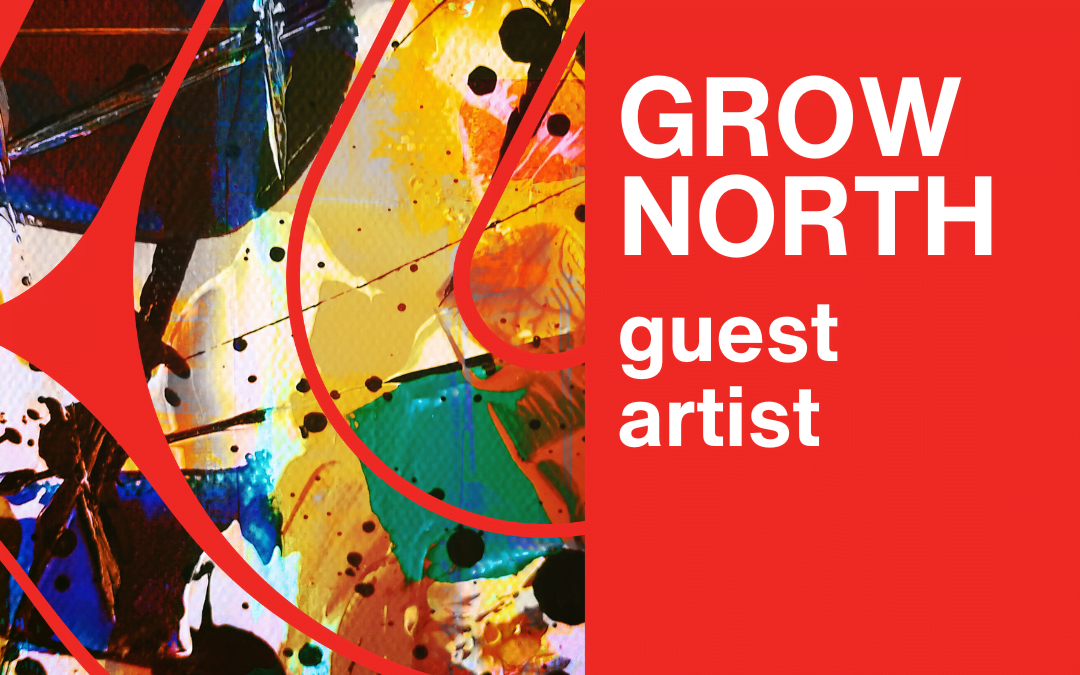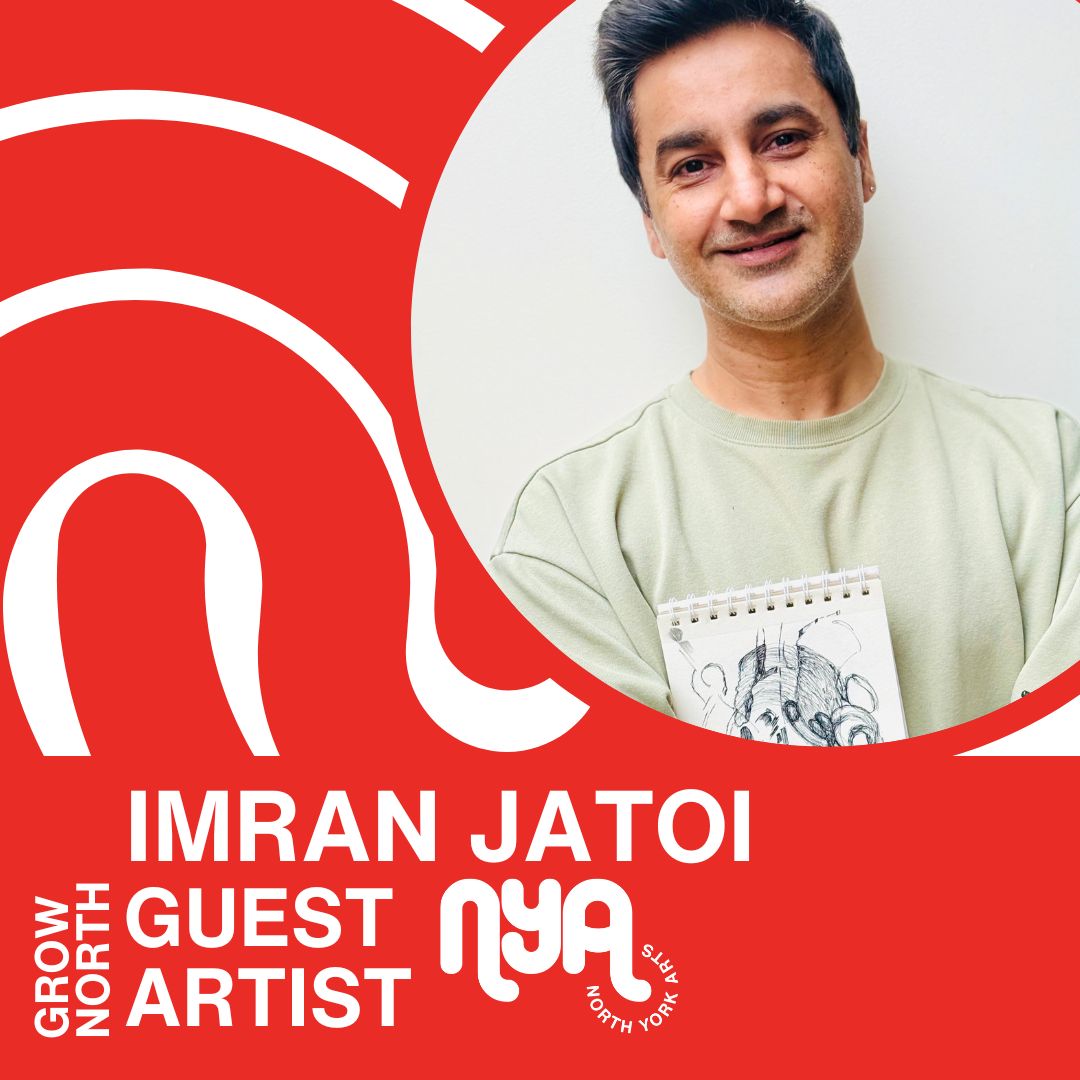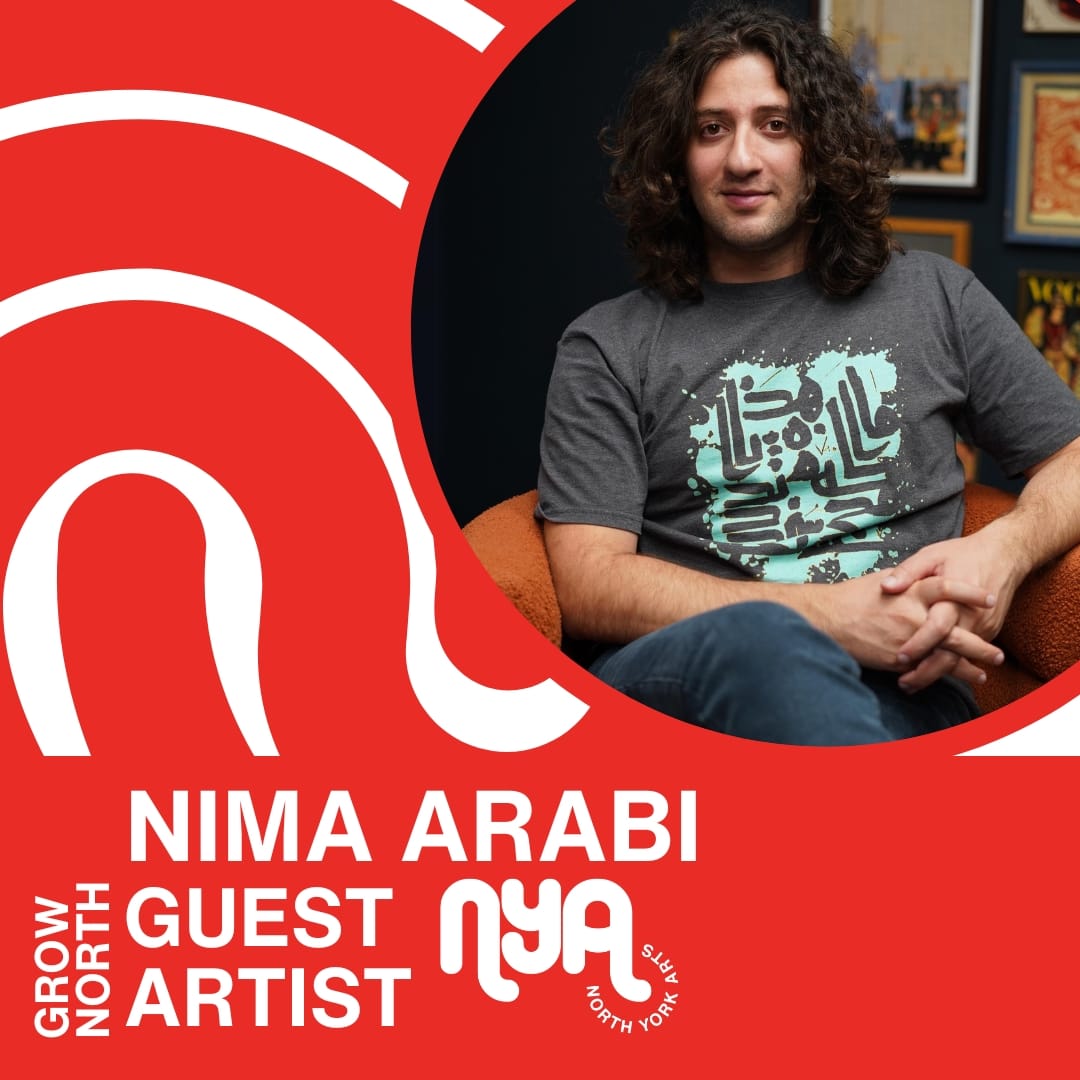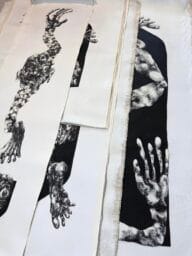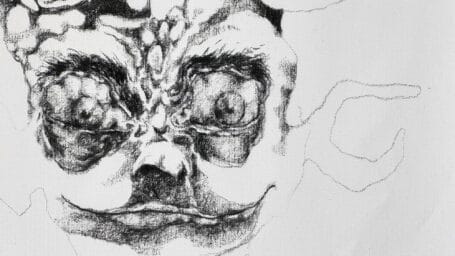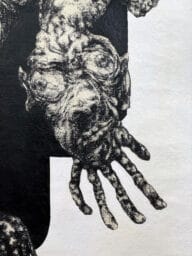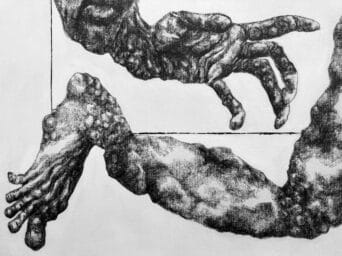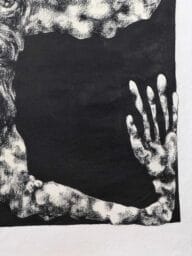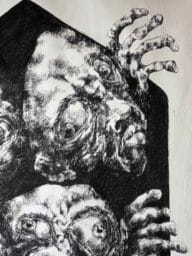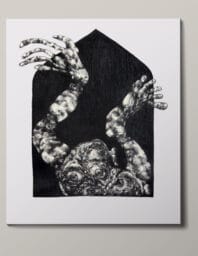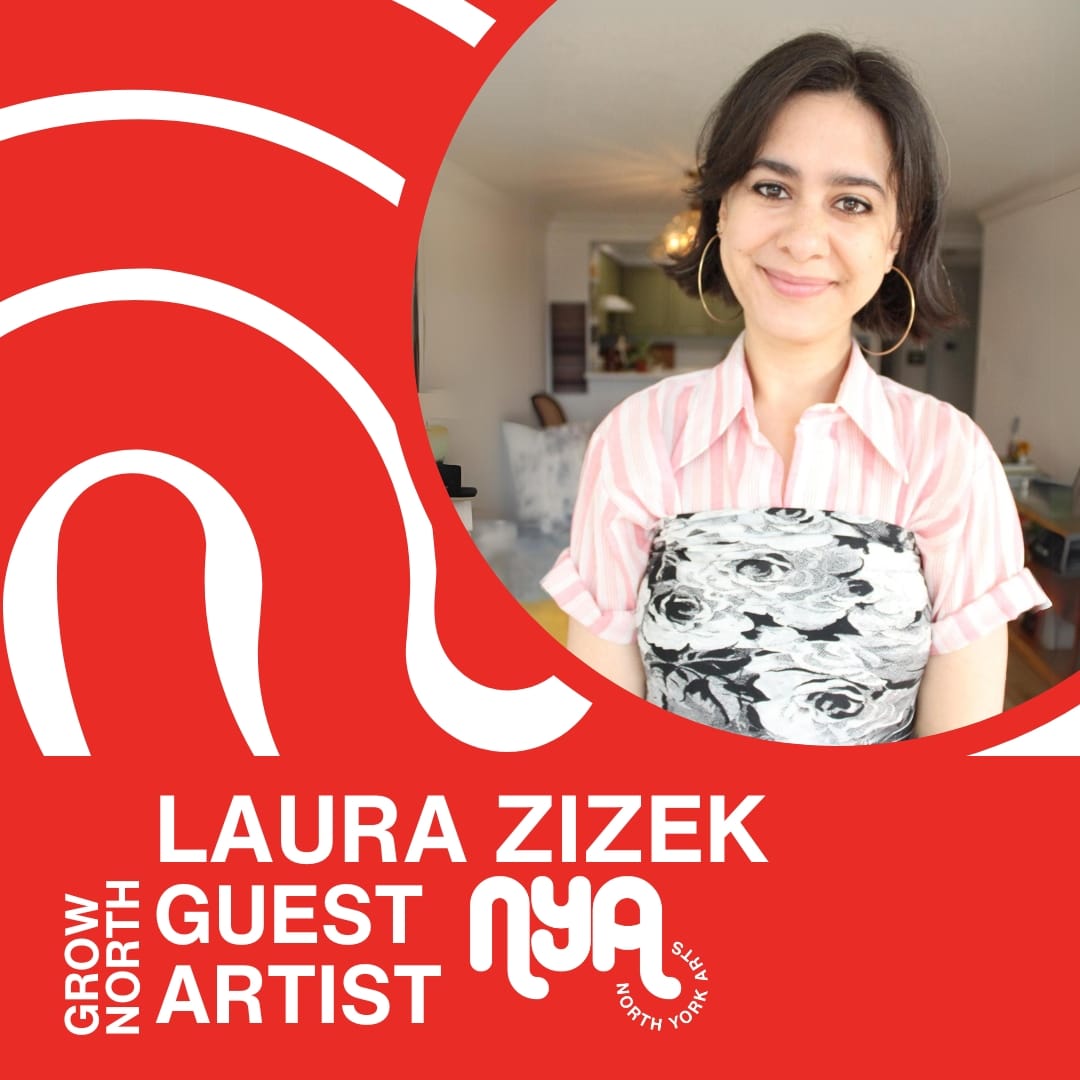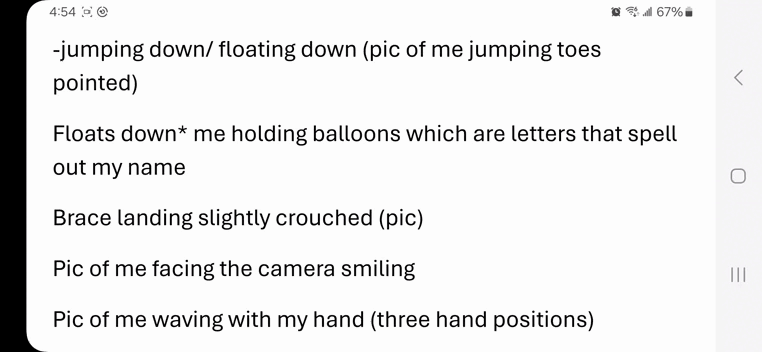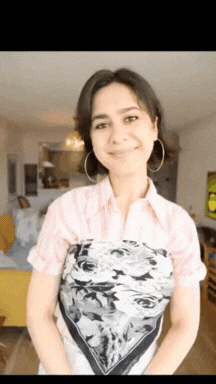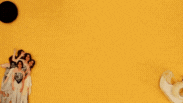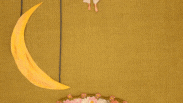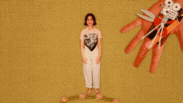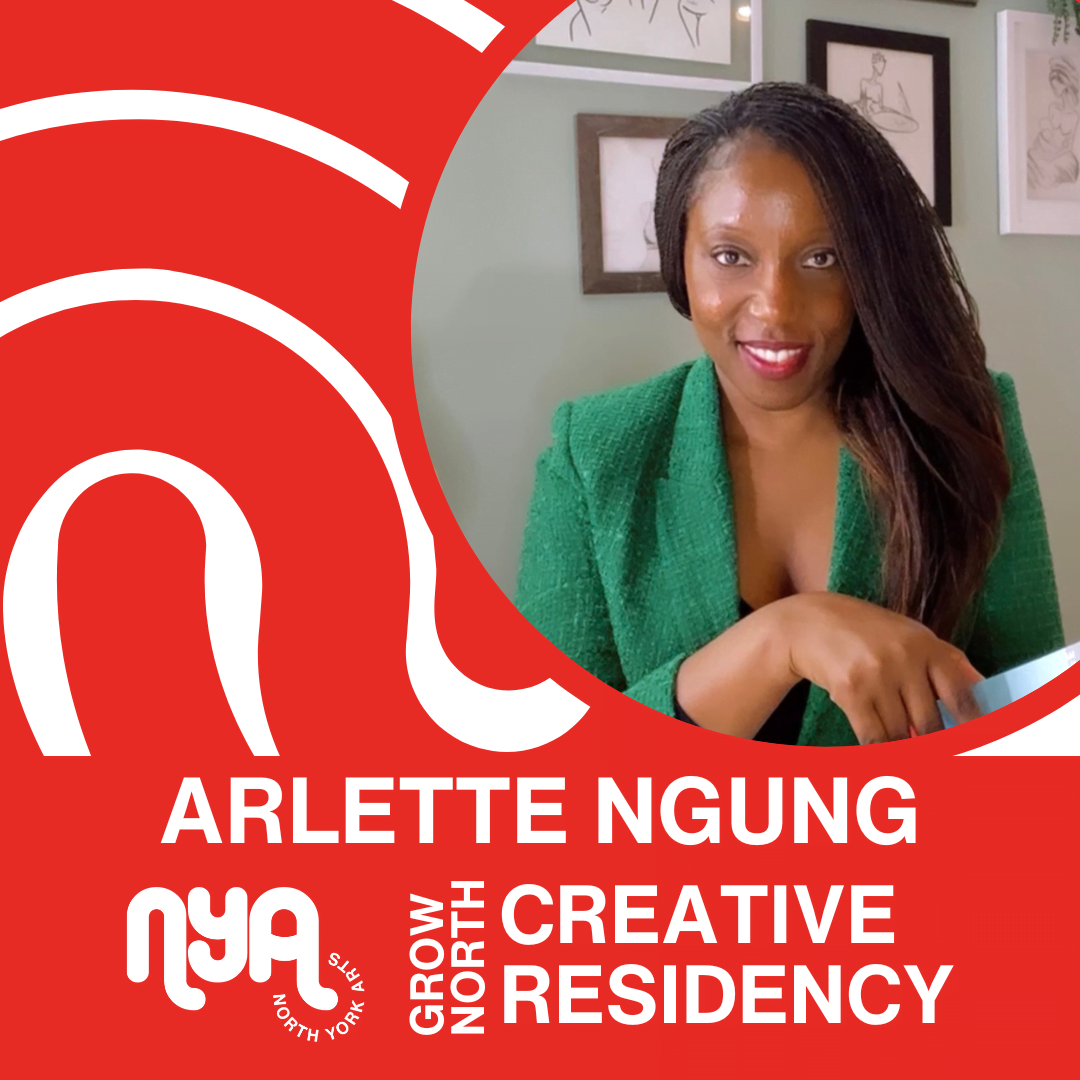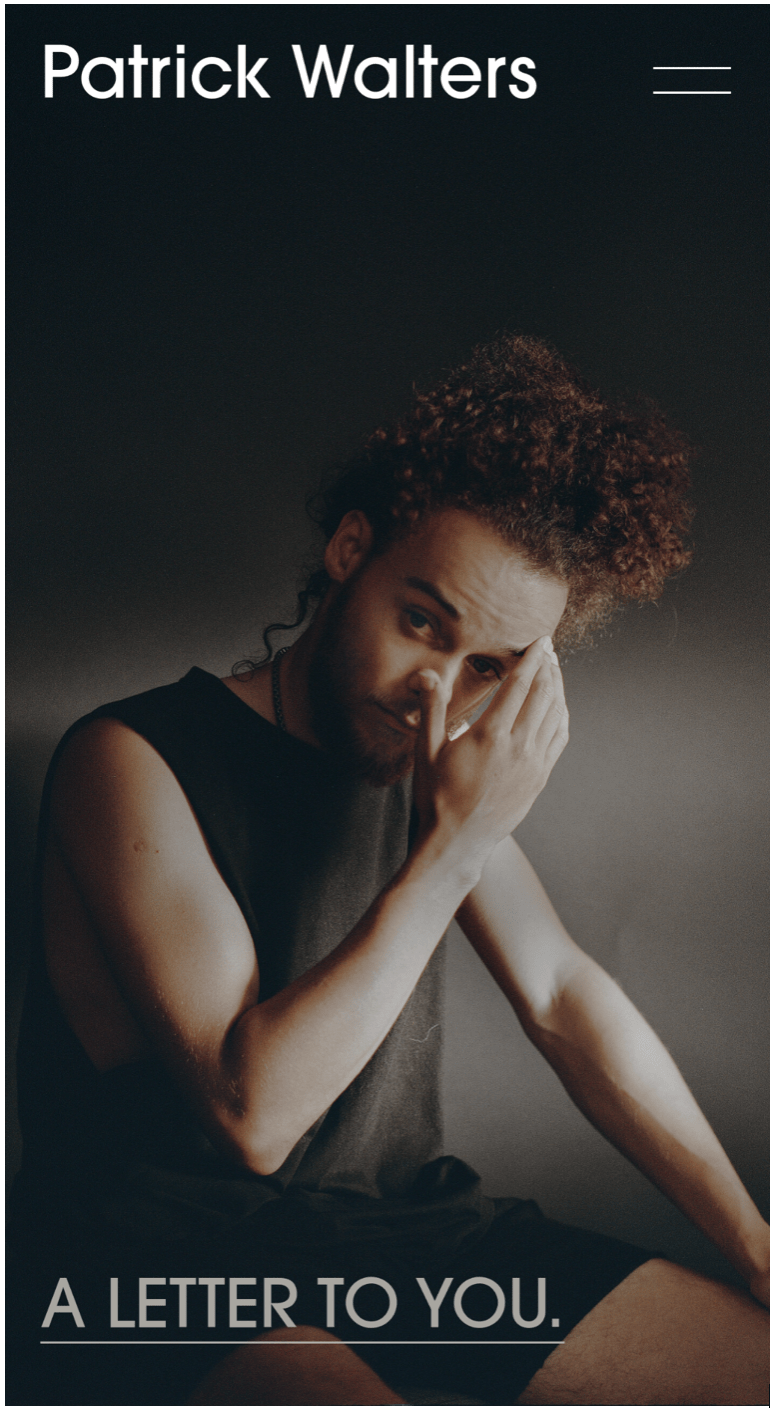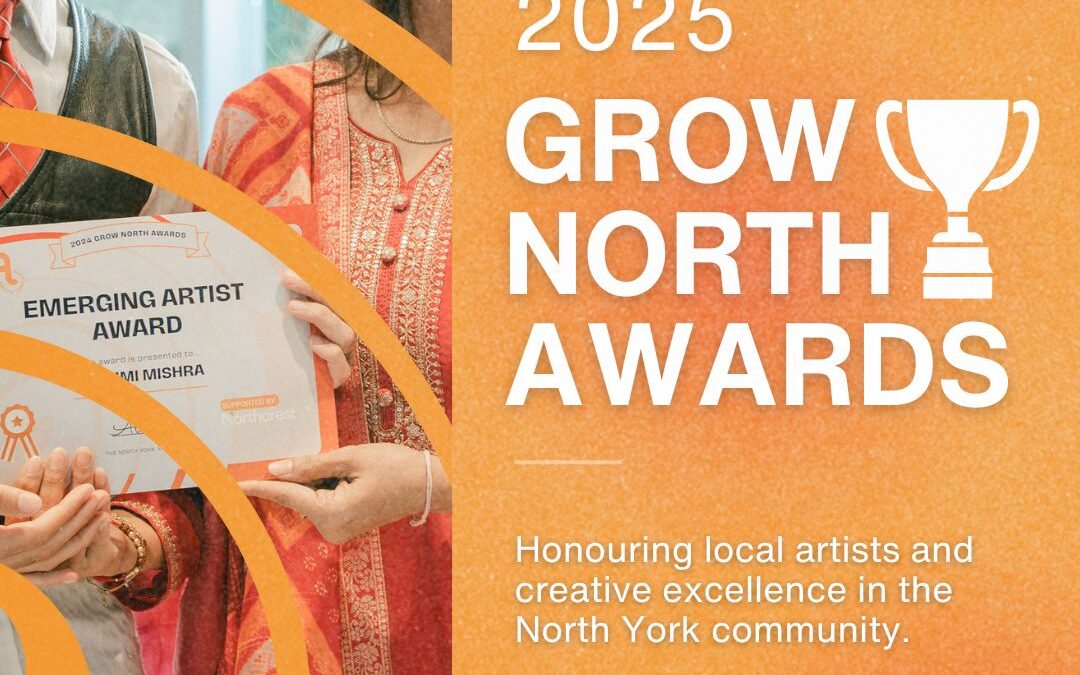
Grow North Awards

NYA Grow North Awards
The Grow North Awards (GNA) acknowledge the significant contribution that North York based artists make to the vibrancy, arts and culture of the North York community. This awards competition offers the opportunity to receive city-wide recognition from a jury of artistic visionaries.
The Awards recognize emerging, established, and community artists in North York and spotlight their contributions to the community and their respective disciplines. Our goal is to highlight the achievements of these artists and to build our local community’s appreciation for the art that is being created in North York.
The Grow North Awards are dedicated specifically to artists based in North York from a variety of disciplines including, but not limited to: Indigenous arts, Disability arts, dance, literature, media arts, multi and inter-arts, music, theatre, visual arts, film.
Please note that these awards are self-nomination only. Artists can submit to one of the following awards:
- Emerging Artist Award:
The Emerging Artist Award aims to celebrate the achievements and artistic merit of a rising North York artist in any field. This award not only honors the past achievements of the artist but also champions the future potential of their work. The artists must have at least 2 years of an independent arts practice. The artists must be in the early stages of their career with a brief history of public presentation of their work. This award is a $1,000 prize.- Established Artist Award:
The Established Artist Award honors a professional artist who has been creating and showing their work for an extended period. Their work has made a significant impact on arts and culture in North York, and the artist has established themselves as an artistic staple in the local arts community. This award is a $2,000 prize.- Community Arts Award:
The Community Arts Award celebrates an individual or collective that has impacted North York communities through their creative programming. The work of this individual or collective will have increased public access to art and contributed to local appreciation for the respective artform. The artist or collective must have a clear history of demonstrated commitment to community engagement through the arts. This award is a $1,000 prize.
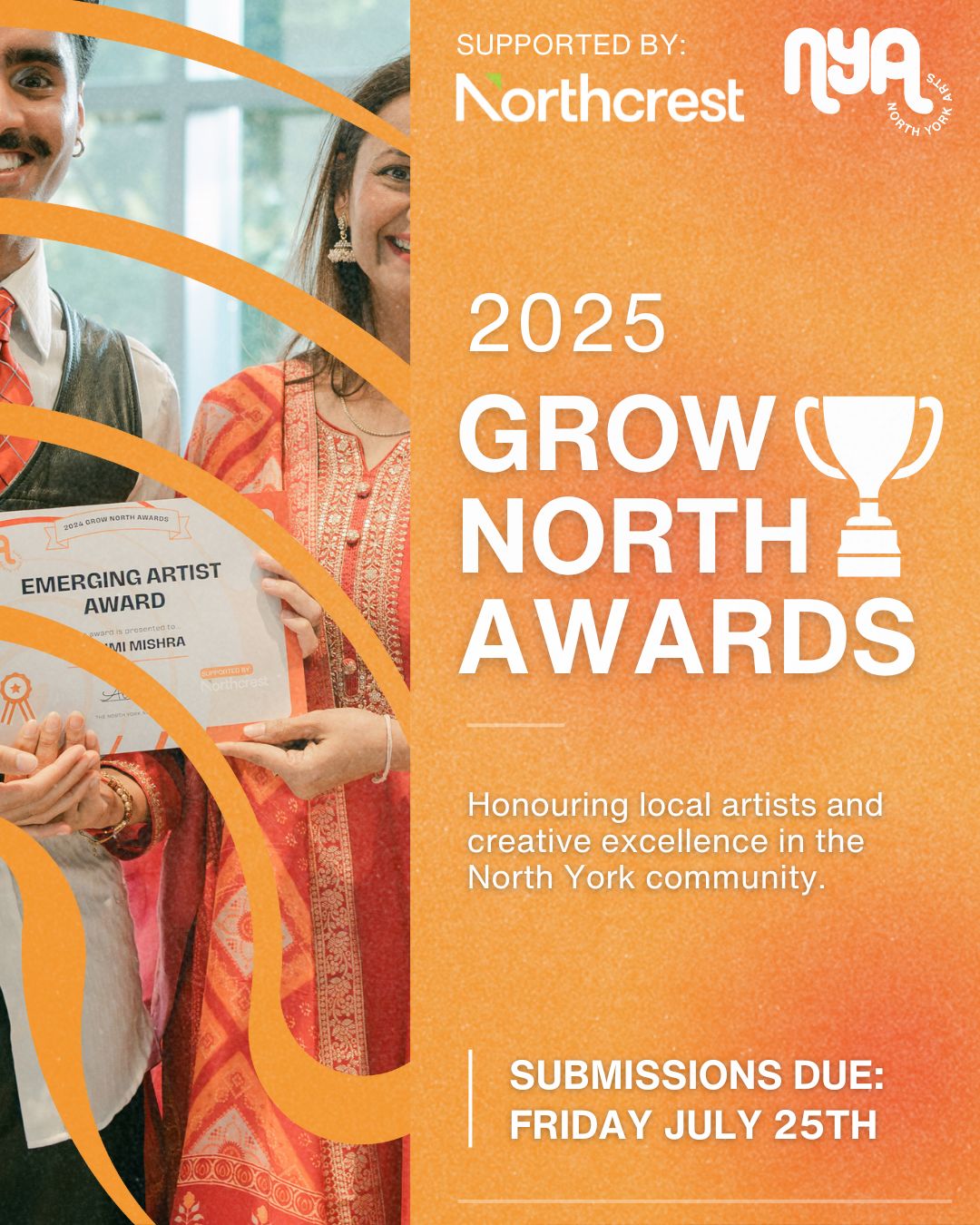
Eligibility requirements:
- Be an individual artist or unincorporated group/collective based in North York.
- For groups/collectives: at least 50% of the group/collective must be a resident of North York and they must be the one applying on behalf of the group/collective
- **Be a qualified artist
- Definition: A qualified artist is someone who has developed their craft through formal training and/or equivalent practice; actively practices and pursues their art; must seek payment for their work; and has a history of public presentation of their work.
- Must have contributed significantly to the arts and culture of North York
- Be a Canadian citizen or a permanent resident of Canada
- Have a Canadian bank account
- Applicants cannot be students enrolled in post-secondary education
- Past North York Arts microgrant recipients are ineligible for the Award
Where is “North York”?
North York Arts defines North York as the following Wards & postal codes:
6-York Centre
8-Eglinton-Lawrence
15-Don Valley West
16-Don Valley East
17-Don Valley North
18-Willowdale
and M3N and M3J postal codes
Historically, North York included M3N and M3J postal codes, but now they fall under the Community Council of Etobicoke. We wish to honor the relationships we have built while this part of the city was previously served by North York Arts.
- You can check if you reside in these Wards by visiting this link.
Your application must include:
- Samples of past works
Note: All submitted materials combined should take no more than 5 minutes to review. This includes time spent watching, reading, or listening. - Your CV
- A 2-page cover letter that explains:
- Your artistic history and achievements
- Tell us about your past projects and their impacts
- Describe any future projects you have on the horizon and the rationale behind them
- Feel free to share whatever you’d like about your journey as an artist
- ***The cover letter can also be presented in the format of a video or audio recording (3 minutes max)
- Your artistic practice
- What inspires your work?
- What makes your work unique?
- What are your goals as an artist?
- Rationale for applying
- What interests you about this award?
- How has your work contributed to the vibrancy and inclusivity of the North York community?
- Your artistic history and achievements
- NOTE: We recognize that tools like ChatGPT and other AI platforms can be powerful resources for improving accessibility and helping applicants organize and clarify their ideas. These tools can support your process—but we encourage you to use your own authentic voice when completing this application. The jury is eager to get to know you—your perspective, your experiences, and your work. While AI-generated content can be helpful, it can also unintentionally create distance between the applicant and the reader. We value sincerity, individuality, and personal insight, and these are best conveyed in your own words.
The primary criteria for assessing the submissions will be:
- The impact of your past art works on arts and culture in North York
- The artistic merit of your practice and past art works
- The strength of your artistic goals and future projects
- The overall contribution of your work to community building and/or community activation through the arts
Juried award review process:
- Award applications will be reviewed by a jury of professional artistic peers and North York Arts representatives
- Award recipients will be notified in mid-August
- Award recipients will be publicly recognized on North York Arts’ platforms and other media outlets
- Note: NYA will NOT be providing feedback on submissions
Accessibility Support
If you require accessibility assistance to complete this application, please get in touch with our Program Coordinator by July 18th: davinder@northyorkarts.org
If you would like more information on the Grow North Awards or to have the opportunity to ask any questions, North York Arts will be hosting an information session on July 10th at 6pm (EST).
The Program Coordinator, Davinder, will also be hosting office hours until the deadline of the application on a first-come first-served basis. Email him by July 21st at davinder@northyorkarts.org to book a timeslot for one-on-one or group support.
SUBMISSION DEADLINE: Friday, July 25th at 5pm
We would like to thank Northcrest Developments, Toronto Arts Foundation, Tarragon Theatre, and North York Arts Programming Committee for their support and feedback in the creation of this program.
Meet our 2024 Recipients!
Meet Ruben
Beny Esguerra (Established Artist) is a Toronto-based, award-winning multi-instrumentalist, producer, spoken-word poet, and arts educator who arrived in Canada as a political refugee with his family from Colombia. Rooted in cultural activism, his work bridges traditional Colombian music with contemporary Hip Hop, earning him recognition such as the 2020 Ontario Arts Foundation Arts Educator Award and two back-to-back JUNO nominations for his latest albums. Beny’s collaborations have garnered international acclaim, including nominations at the International Indigenous Hip Hop Music Awards and wins in Music to Life’s Hope Rises II contest. His most recent project, “Eterno,” with Los Gaiteros de Ovejas, celebrates cross-cultural collaboration and musical heritage. Additionally, he co-leads the NTM Wheel it Studios mobile project, empowering Jane-Finch artists through mentorship and access to resources. Beny is a PhD (ABD) candidate in Musicology/Ethnomusicology, specializing in Colombian traditional music and Hip Hop culture.
Meet Rashmi
Rashmi Mishra (Emerging Artist) is a celebrated Indian dancer, choreographer, and educator with over 30 years of experience. Trained under the legendary Pandit Birju Maharaj Ji, she is currently pursuing her Ph.D. in Kathak, deepening her expertise in this classical art. Rashmi has received prestigious awards in India such as the “Saraswati Samman,” “Braj Ratna Award,” and the “Best Kathak Dancer Award” from Governor, along with international honors from the “Book of World Records, London,” and the “Medallion of Honour of Nadezda Petrovic” in Serbia.
Rashmi has performed across the globe, including in Denmark, Dubai, and Bangkok. After relocating from India to North York two years ago, she expanded her Rashmi Academy of Performing Arts (RaPa) with branches in both Mumbai and North York. She has showcased her talent in Toronto at various events like Nuit Blanche, Rhythms of Canada, Festival of India etc. She also founded the North York Diwali Fest at Mel Lastman Square, bringing the communities together through vibrant cultural celebrations.
Meet GREENPRINT
The Greenprint Network (Community Arts Award) believes that the arts are a powerful catalyst for community building and personal development. By providing a dynamic platform for young creatives to collaborate, the organization facilitates not just artistic exchanges, but also the formation of supportive networks that propel its members towards both individual and collective success.
Its programs and initiatives are designed to equip emerging artists with the tools and opportunities necessary to thrive in the creative industry. From interdisciplinary workshops and mentorship to live performances and exhibitions, the Greenprint Network strives to create an environment that is conducive to creativity and growth.
Through these efforts, the Greenprint Network aims to transform the landscape of Toronto’s artistic community, making it more inclusive, supportive, and vibrant. It is committed to being a cornerstone for young artists, helping them to lay down strong foundations for their artistic careers while contributing positively to the cultural fabric of the city.
Meet Patrick
Patrick de Belen (Established Artist Award – Honorable Mention) is a rare breed of artist. This Toronto-based Filipino-Canadian spoken word poet, performer, speaker, filmmaker and educator is one whose formidable acclaim as a performance artist and writer is equaled by his commitment to his community, and his status as an enduring source of insight, energy and mentorship for young poets across North America. As a performer, Patrick has garnered praise and admiration for his ability to blend sharp social commentary with an exhaustless wit, charm and creative candour. This combination of talents has made him a national slam champion, as he was at the 2012 Canadian Festival of Spoken Word, and a performer of note on such platforms as CBC, TED Talk, the NBA, NFL and others. He is also the first ever recipient of the Spoken Word Youth Poet of Honour award at YouthCanSlam 2013 and the 2019 Canadian Poet of Honour at Canada’s national poetry festival, an award he won on the basis of his dual talents asa poet of remarkable ability and an educator of enduring devotion, passion and intelligence. Off the stage, he is committed to his work in arts education/mentorship and curating multigenre showcases; involved in partnerships with a long list of institutions and organizations including jails, schools, health centres, libraries and more.
Meet Merey
Merey Ismailova (Emerging Artist Award – Honorable Mention) is an award-winning dancer, choreographer, and physical theatre artist based in Toronto, originally from Almaty, Kazakhstan. She received her professional training at the Sputnik school in Moscow and Ballet Creole School in Toronto, studying contemporary, ballet, modern and jazz. She has created numerous original choreographies performed in North America, Europe, and Asia. As the artistic director of The Ismailova Theatre of Dance, Merey has produced 14 full-length productions for North York audiences and organized community dance workshops for immigrant youth winning Newcomer Artist Award twice from the Toronto Arts Foundation.
Meet Pam Lau
Pam Lau (Community Arts Award – Honorable Mention): PAM LAU is an independent photographer and educator. Ambassador for Canon Canada and Curatorial Advisory Board Member for PhotoED Magazine. Frustrated with a culture of gatekeeping and lack of transparency, Pam co-founded Ecru; a grassroots educational initiative for those who face financial, cultural and institutional barriers to entering creative industries.
Meet our 2023 Recipients!
Meet Brian
Brian Jiang (they/she) is a queer trans multi-disciplinary artist of Chinese-descent based in Tkaronto. Their practice comprises of animation, illustration, painting, graphic design and beyond. As an artist collaborator working within the cultural sector, their arts-practice is informed by the love for their communities. Brian’s work draws upon mythology, the natural world, and lived experiences to explore the ties between identity, diasporic migration, kinship, and ecological connections. They have been commissioned by Pride Toronto, Toronto Reel Asian International Film Festival, Inside Out Film Festival, Maisonneauve Magazine, LinkedIn StreetARToronto and more. Their work can be found at @_brianjiang.
This microgrant will be used to create a series of paintings that explore the implications of “passing” through my lens as a trans racialized individual.
Meet pothound
Jay-Marie Phillips, known as pothound, is a Trinidadian-Canadian musician, producer, and artist. Her music spans electro-pop and acoustic indie soul, exploring themes of identity, solitude, and the clash of cultures. pothound’s debut record, Video Garden is a concept album, drawing on visual themes of neon noir, solarpunk, and urban jungles.
Jay’s practice is intertwined with identity and belonging as a queer, trans, Scarborough-born, Trinidadian-raised artist and organizer living in Toronto. Her work strives to find meaning in being an outcast. In 2020, Jay co-founded Cooler Fete, a queer Caribbean diaspora party, and is one of the resident DJs.
This microgrant will be used to help aid in the creation and development of visual elements for my debut project, Video Garden, using 3D animation and illustration.
Meet Nailah
Nailah Renuka is a circus and dance artist celebrated for her exceptional athleticism, curious spirit, and captivating stage presence. Her creative approach prioritizes interdisciplinary collaborations among diverse visual, musical, and movement-based art disciplines as well as between various circus disciplines like contortion, pole, and lyra. She weaves transitional patterns and evocative imagery into her work, channelling the full spectrum of human physicality and the intricacies of musicality in her explorations of what it means to be human. Most recently Nailah has worked with Les 7 Doigts as a pole artist in the creation of a new show.
This microgrant will fund 8-month contortion, hand-balancing, and acrodance training with Samantha Halas and Katelyn Ettinger to enhance skills, artistry, and receive mentorship in the circus industry.
Meet Natalie
Natalie Paton is a writer and filmmaker who tells stories about womanhood, immigration, generational relationships, Western society, and power dynamics. She loves calling the multicultural city of Toronto her home and is continuously inspired by her experiences and the experiences of those around her. Her work focuses on a mix of fiction and documentary with the goal of contextualizing the systems around us through character-driven stories.
This microgrant will be used largely to pay for location-based filming in North York, interviewing local residents, and renting equipment for filming dates (est. 4 days).
Meet Yago
Yago Mesquita is an emerging, queer Brazilian-Canadian theatre artist from Toronto, ON. He is a playwright, performer, and producer with values of authenticity, care, connection, creativity, and fun grounding his artistic practice.
Yago creates character-driven work from a young, queer, first-generation Canadian lens, heavily informed by his experience and that of friends, family, and fellow artists. Yago is keen to push the boundaries of theatrical storytelling through highly imaginative, poetic, sensitive, and revealing multidisciplinary work that uses stylistic surreal elements that divorce itself from realism.
This microgrant will support a self-directed experimentation process within the context of ABfe47 to better understand its theatrical form, which is essential to ABfe47’s development.
Meet our 2022 Recipients!
Meet Aalyaland
Aalyaland is a Pottery and ceramics Artist that will use the Grow North Micro Grant to create a ceramic art installation entitled “Vigilaunties” depicting tea cups with red flags –spilling the tea on toxic aunties that perpetuate patriarchal mindsets and societal norms through their behaviours towards people of all genders.
“First and foremost, my goal is to make people laugh because of how relatable and unfiltered this project is. Most South Asian womxn and non-binary folks I know have experienced toxic aunty behaviour. My hope is to create an art installation that people capture, share, and send to aunties via WhatsApp (the App that they most use to send forwards on to their peers).” – Aalyaland
Meet Anaiah
Anaiah Lebreton is a Multimedia Artist that will use the Grow North Micro Grant to create a music video – merging graphic design with music production and videography to an original song highlighting queer love. On the second slide, you can find examples of Anaiah’s past work featuring snippets from a collaborative zine “Youth In Revolt, Rookies With Friends.”
“This project is important to me because I see it as an opportunity to actualize a vision of powerful rebellious Queer people I often see missing from media spaces” – Anaiah Lebreton
Meet Miguel
Miguel Caba is a visual artist/painter that will use the Grow North Micro Grant towards research on the demolition of apartment housing in North York and the stories of the people that live there and then produce art objects based on that research.
“This subject is important to me because I have also experienced displacement in North York as the building I have lived in for my whole life was demolished to build new condos. I know that this is not an isolated experience since many buildings are pending demolition or have already been demolished in North York and in each of those buildings resides hundreds of people all with their own stories similar to mine about navigating displacement.” – Miguel Caba
Meet Pierre
Pierre Poussin is a large-scale sculptor that will use the Grow North Micro Grant to learn and refine his skills of digital-hand-sculpting, helping his concept development and fabrication processes become much more efficient.
“This activity is very important to me because it would allow me to bring my digital art-making processes and public art skills to the next level. I want to take the time to learn digital sculpting, because I will be able to use this newly-acquired skill within my public art practice. I will hopefully be able to digitally-sculpt just as effectively and efficiently as sculpting with clay.” – Pierre Poussin
Meet Shan
Shan Fernando is a theatre artist, who will use the Grow North Micro Grant to fund research and writing of a new play, in addition to paying for a playwriting workshop.
“My play is about an affluent Toronto family, the Austins, as they navigate mental health, addiction, and the acceptance of one’s sexuality”- Shan Fernando
Meet Shanika
Musician Shanika Lewis-Waddel will use the Grow North Micro Grant to fund the creation of a new work mixing electronic/ambient/experimental music with steelpan.
“I am curious to incorporate styles/instruments/sounds that aren’t commonly heard together. With a goal of play, exploration, curiosity to see what new things can expand from these often separated genres…I plan to interview my 94 year old maternal grandfather who lived the majority of his life in Trinidad. I want to incorporate some of his stories into the music and let that guide the creation. I want this to be a project that allows me to learn more about him and Trinidad through his eyes.”- Shanika Lewis-Waddel
This program is supported by:




